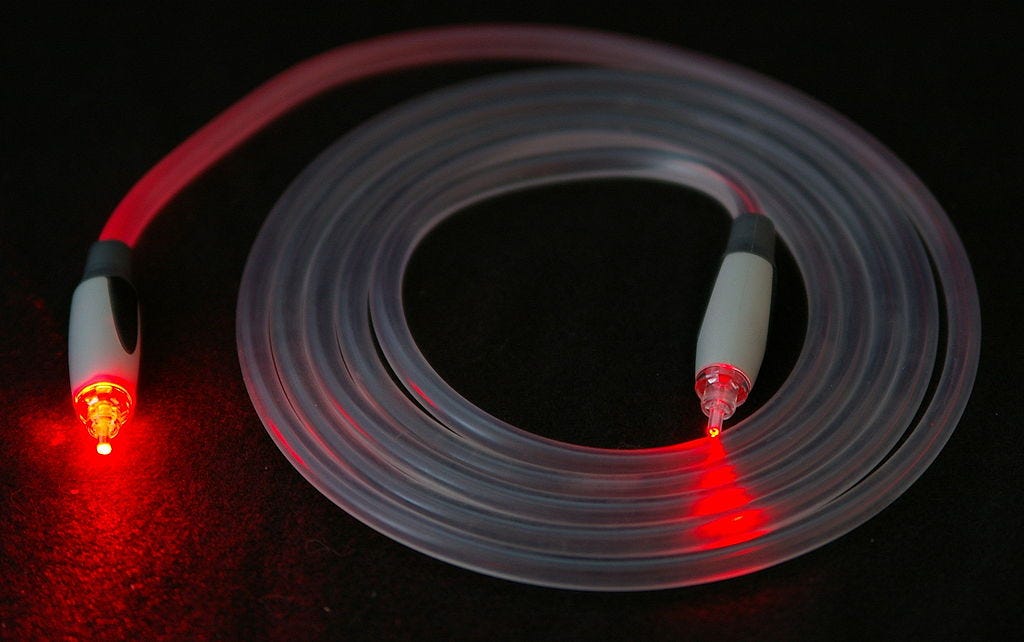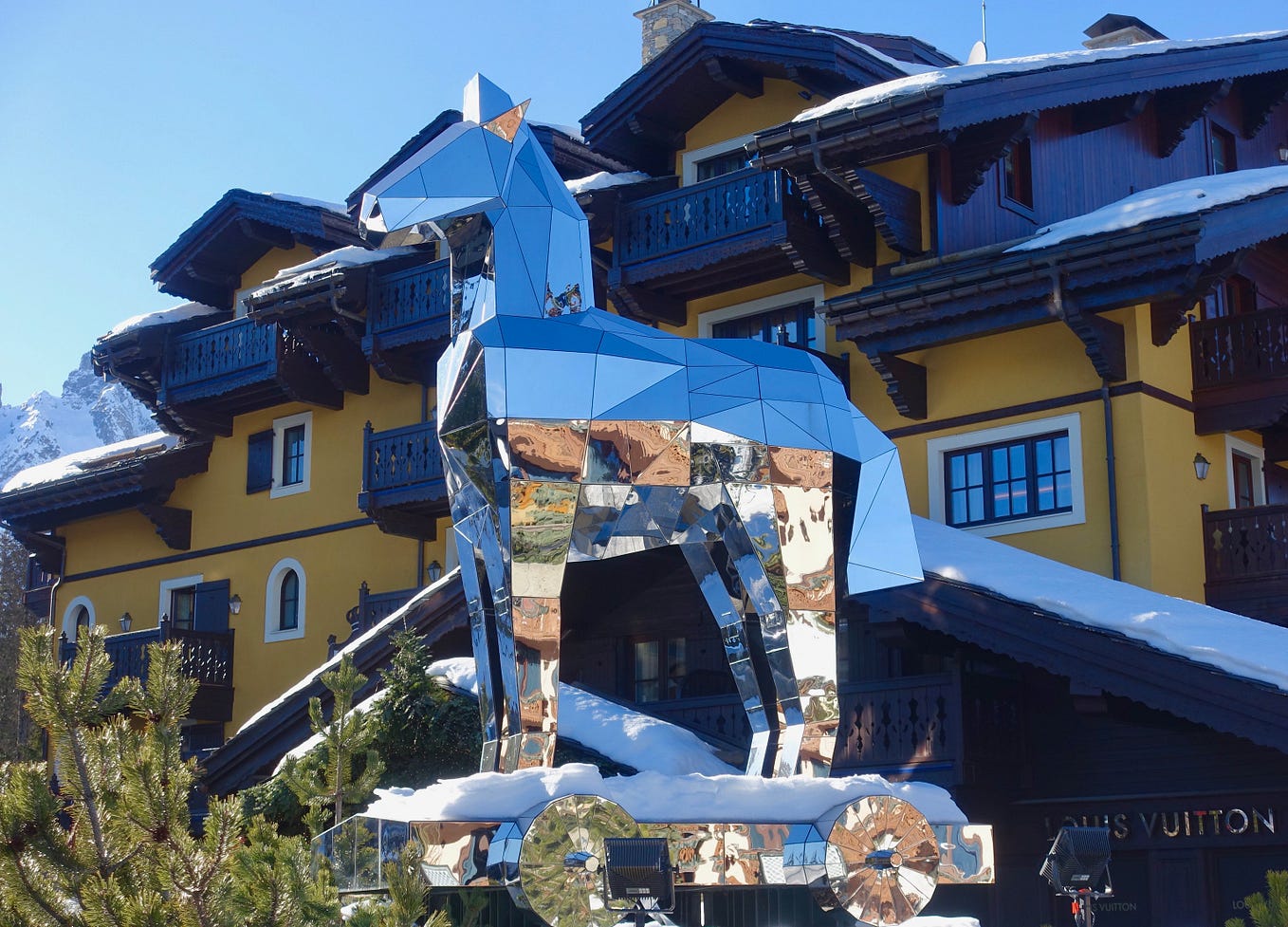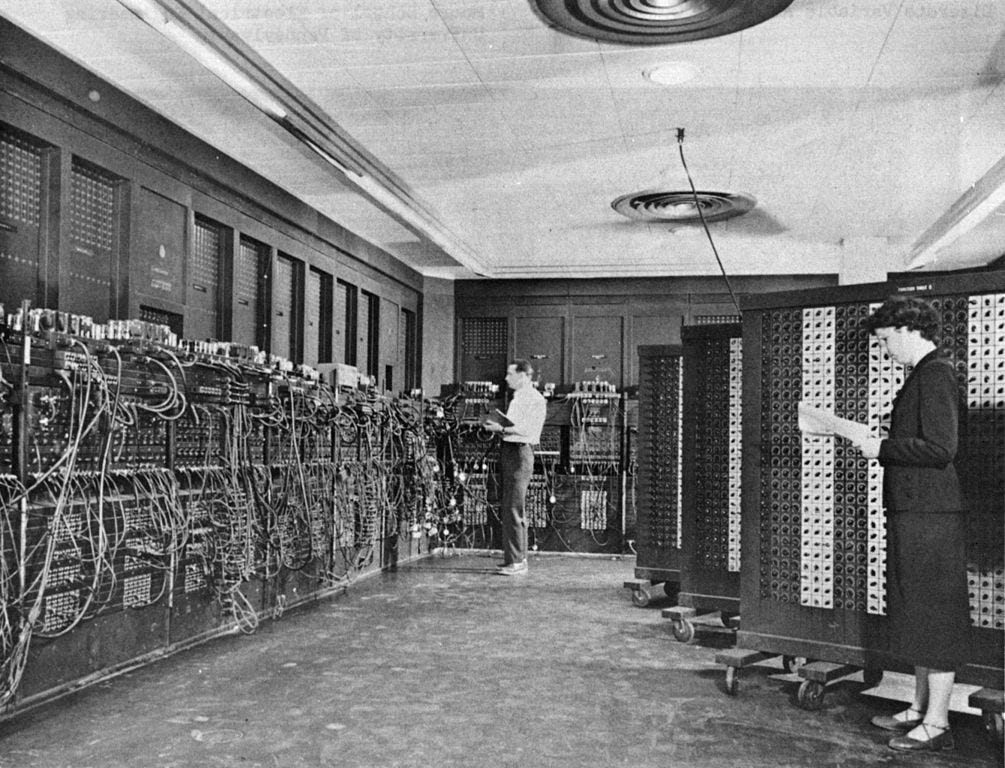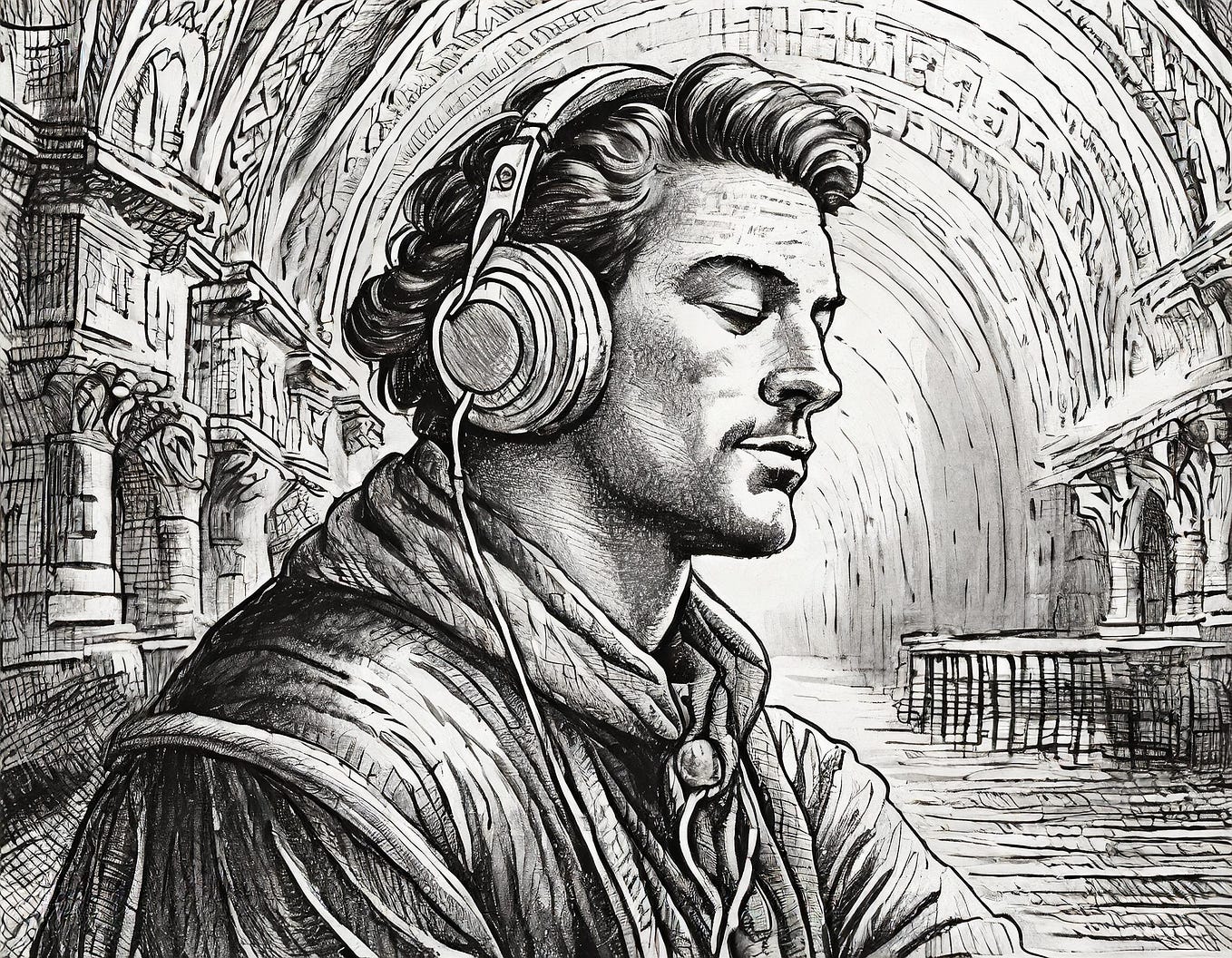Why Do Computers Think in 1s and 0s?
As I alluded to in How Does Light Carry Data Across Optical Fiber, computers like to think of information in terms of 1s and 0s. What is special about those two numbers? Why aren’t any other numbers used?
This is a simple question with fascinating implications. I can think of three ways of approaching it:
- The Signal Processing Answer
To understand why 1s and 0s are so important, let’s first look at the nature of analog and digital signals. To transmit an analog signal, you need a dial, like the one you’d find on a stove. The dial has tick marks that go between 0 and some number—usually 8 or 9, but for our purposes, and to keep things simple, picture a stove dial that runs from 0 to 1.
As you turn the dial, you directly influence the strength of the signal being transmitted to the burner. The dial, when off, sends zero signal. Nothing. The burner is room temperature. If you turn the dial half way, you transmit a value of 0.5. As you keep rotating it towards 1 (full heat), the value gradually increases: 0.51, 0.55, 0.62549, and so on.
To transmit a digital signal, you’d use a switch that is either on or off; 1 or 0. There either is a signal or there isn’t. The burner is either fully on or completely off.
This is a really important distinction, because as information travels along a wire, it can be subject to degradation and distortion. If I have a dial connected by a long wire to a burner in the next town, the position I chose on the dial won’t match the heat produced by the burner. I might set the dial to 0.87, but as the signal travels along the wire, it will get weaker until there is very little signal coming through the other end. I might only get a burner heat of 0.28.
Digital thinking shifts the question away from “How strong is the signal?” to “Is there a signal at all?”. If my burner is connected to a switch, and I flip it on (sending a 1), no matter how much the signal degrades, I can reason that any tiny bit of current coming out the other end implies that a 1 was sent to begin with. I can recover information lost in transit. Even if my burner receives an extremely weak 0.03 signal, it knows there was a signal at the start, and no matter how degraded it is when it arrives at its destination, the instruction is clear and unambiguous: turn the burner on.
This is the core trade-off between analog and digital thinking. Analog circuits are able to transmit much more information (i.e. any of the infinite decimals you can think of between 0 and 1), but don’t ensure the reliability of the information as it travels through wires. Digital circuits, on the other hand, transmit the smallest amount of information possible (a 0 or a 1), but do so in a way that is impervious to loss. This is a property called discreteness.
Is this a useful trade-off to make? What’s the use of a burner with only two settings? Why did I even buy this absurd and expensive long-distance stove if I can only have raw or charred onions, and nothing in-between?
2. The Mathematical Answer
When humans and aliens make contact, there will inevitably be disagreements between us, given that we have ten fingers and they, (it is well known), only have two.
Representatives from both species will meet, look at a small pile of pebbles on the ground, count them in their head, and then write the tally on their respective notepads, like some intergalactic Newlywed Game. Our number will be 17. Theirs will be 10001. War will erupt, a tragedy in itself, now compounded by the fact that both species expressed the same information about the same pile of pebbles. Both were correct. Our number was in decimal (we use ten digits, including 0), and theirs was in binary (two digits, 1 and 0).
It may seem a bit mind-bending at first to think that you could express a number like 17 using only 1s and 0s, but consider how both the human and the alien count the pebbles in their heads:
The genius of computers is in the realization that, when you combine discreteness (discussed in the first part) with binary counting, you can effectively transmit any number, any value, with full reliability.
Our long-distance digital stove currently sends a single bit (short for “binary digit”; a 1 or a 0) along the wire, and that’s why it only has two settings—on or off. But what if it could send more? If we modify our stove to transmit ten separate bits along the wire, one after the other, we would have much more control over the temperature. Here’s how that would work:
On one end, our dial would run from 0 to 1000. As you turned the dial, you would select a number (say, 655 for medium-high heat). A little counter inside the dial would keep track of the number, using ten binary digits (1010001111). Those digits would then be fed into the wire, one after the other. No matter how weak the signal at the other end, the mere presence of signal would let you recover the 1s, and the absence of signal (i.e. a pause) would let you recover the 0s. With that, the number received would be fully captured (1010001111), converted back to decimal (655), and the appropriate heat would be expressed by the burner.
(Astute readers may wonder, “This explains how you can represent numbers bigger than 1 in binary, but what about fractions? What about negative numbers?”. There are good explanations for each of these that would make this discussion a bit long, but the short oversimplification is that if two computers can first agree on what format a number will take, all they have to do is transmit the individual digits. If computer A first informs computer B that it will send “a negative number with two leading digits and three trailing digits”, all it has to do next is send the numbers “14338”, and computer B will put those two piece of information together to obtain a final value of “-14.338”.)
3. The Cosmological Answer
To borrow from the plot of Apocalypse Now, you’ve made it up the Nùng River, past the beaches of signal processing, and past the midpoint of binary counting. You now arrive at the end of the journey, the heart of darkness. Here resides Colonel Kurtz, he who has witnessed the transcendental madness of the matter, “the horror, the horror”.
Ok, that’s a tad dramatic. We’re actually not arriving at a place of darkness, we’re arriving at a greater truth, a place of light, a cosmological explanation of 1 and 0 (“cosmological” from the Greek word “cosmos”, beauty—as in cosmetics).
In a way, you could say that 0 and 1 are existential numbers. 0 represents nothingness, absence. 1 represents somethingness, the presence of an entity. The gap between these two concepts is behind the most profound questions the human race asks: Where did we come from? How did the universe come into being? What was there before? Where do we go when we die? How can nothingness beget somethingness? Where does somethingness go when it must become nothingness?
These are some of the fundamental mysteries we ponder, and maddeningly, we are probably little closer to answers now than we were thousands of years ago. This precondition of nature, this open question endlessly befuddles us, confuses us, and seems to wrap our understanding of the universe within an impenetrable riddle.
(Ironically, the aliens have the answer, but we’ll shoot them for having two fingers.)
One of the biggest motivations behind the development of computers and software is the desire to build a better, faster, vaster intelligence than our own. Early computers, for instance, were built to calculate missile trajectories and did so many, many times faster than humans could. Today, we’re closer than ever to achieving the ultimate milestone in this quest, that of building an artificial intelligence (AI) so powerful that it would be indistinguishable from human intelligence.
As software increases in complexity, computer scientists are getting better at modelling the “real world” inside a computer—because what good is an artificial intelligence that isn’t in touch with reality? In building out software that can reason about reality, we find that the chasm between nothingness and somethingness—which we may never fully understand how to cross—keeps reappearing.
For instance, reasoners are pieces of software that can read an encyclopedia, learn from it, fact-check it, and even come up with new conclusions. One of the axioms (a fundamental, necessary truth) built into this kind of software that makes reasoning possible, states that nothingness and somethingness simply cannot be equated or connected in any way. This key realization about knowledge—that there only really exist two knowable concepts that are mutually exclusive—is non-negotiable to the software. As it runs, as it fact-checks existing knowledge and derives new conclusions, it constantly asks itself the same question: “Does any of the knowledge I have learned somehow lead to the conclusion that somethingness and nothingness are, in fact, the same thing?” If the answer is ever ‘yes’, the program knows it has read or produced a bad piece of knowledge.
In other words, humans and computers can perceive reality in any number of ways, and can write any number of encyclopedias, but for any depiction of reality to be logically sound and consistent, the cardinal rule must never be broken: something cannot be nothing, and nothing cannot be something.
We have built tools that can flip bits between 0 and 1 without fully understanding this phenomenon in our own reality. This raises interesting questions about our own condition. If electricity (or light, or radio waves, or any of the forces of elemental physics under our control) can cross the chasm between something and nothing, what are the meta-forces (the forces outside of our reality) that flip these bits in our world? What are the forces that dictate when our 1s must become 0s?
It strikes me as profoundly fascinating and even poetic that an entire microcosm can be constructed around the notion of juggling 1s and 0s, of so casually manipulating the building blocks of reality, of so nonchalantly hopping back and forth across the divide—acting with such indifference towards the fact that our entire universe, and the deepest questions we have, lie in the space between these two poles of existence, between 0 and 1.









